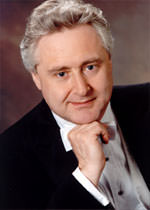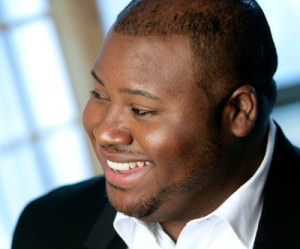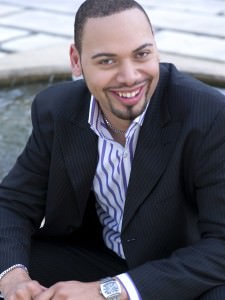Artistic risk-taking in Washington extends across many genres to numerous performing groups. The region’s vocal music scene certainly got a flavor of that on Saturday night in a one-time concert presentation of a rarely performed opera by Richard Wagner.
The results of the National Philharmonic’s presentation of Wagner’s early and troublesome opera Rienzi may have been imperfect, but they were also revelatory. In a local opera season that will culminate next spring with Wagner’s monumental Ring Cycle at The Kennedy Center, the National Philharmonic’s Rienzi provided both a rare look at Wagner’s initial development and a star vehicle for a compelling young tenor with local roots.
Rienzi is rarely performed for good reason. It’s absurdly long even by Wagnerian standards (six hours), self-importantly dramatic with little if any comic relief, and awkward in its imitation of an early 19th century style of French grand opera with numerous spurious elements.
The story itself is a mash-up of a tale of a previously jailed political leader who returns to lead the medieval Roman masses in a revolt against corrupt nobles, and a Romeo & Juliet-like family feud that feeds a subsequent final revolt against the same leader. Repeated musical motives represent individual characters and moods in a manner typical of large Wagnerian dramas, but with far less sophisticated connective tissue than Wagner was to develop in his later music dramas and the four-opera marathon of the Ring Cycle.

Two key factors went into the National Philharmonic’s ability to pull off a concert version of this work. The first was a great job by its music director, Piotr Gajewski, in condensing the massive work to 2½ hours. Such an effort required unusual flexibility by the massed performers who are accustomed to working from the “received texts” of the classical music canon and sometimes had to scramble to be in the right place. Those forces included the National Philharmonic’s orchestra, the Philharmonic’s chorale under the direction of Stan Engebretson, and a crucial contribution by the Washington Men’s Camerata, bolstering the male choral sound that is prominent in Wagner.
The other key was an outstanding performance by tenor Issachah Savage in the title role. Mr. Savage has the dramatic tenor qualifications to sing Wagner at substantial volume and to credibly portray a ruler who is alternately an agitator against tyranny and tyrannical himself. Yet Mr. Savage’s voice never comes close to descending into operatic caricature. His gorgeous high A’s and B’s have a controlled vibrato and a focused, almost pearl-like quality that could also credibly hold the stage in some of the tenor parts in contemporary Broadway musicals.
Near the end of the opera Mr. Savage, sounding completely fresh, stopped the show with his performance of “Rienzi’s Prayer” on a soaring melody teed up two hours earlier in the overture. With a master’s degree in opera performance from The Catholic University and a Metropolitan Opera debut last season in Verdi’s Ernani, Mr. Savage is closely followed by some Washington area opera fans for what could be a career in an unusually wide repertory of tenor roles.

The audience at The Music Center at Strathmore did endure several challenges before the money moment of Mr. Savage’s final aria. Like staged operas, this purely stand-and-sing Rienzi was performed with English translation of the German text projected above the stage. But the Philharmonic seemed to translate the entire text, which is not consistent with best practices in surtitles. The result was too many surtitles, including repetitions of the redundant declarations of emotions that are present in all 19th century operas.
Maybe it was easiest to take the full English translation of the opera score once it had been condensed and present it all, rather than have someone labor at the additional task of crafting a more elegant surtitled English libretto for the audience. The complete absence of stage action to suggest meaning may also have played a role in prompting such a literal translation, but the overly rapid appearance of new lines proved to be a distraction.
The pure concert nature of this performance – all of the solo singers stood at individual music stands throughout the opera – also affected a core relationship in the opera, that of Rienzi’s sister Irene and her ultimately forbidden boyfriend, Adriano. True to Wagner’s original composition, both Adriano and Irene were played by women, with the role of Adriano considered a “pants role” for a mezzo-soprano. Odd as that may seem to non-opera-goers, the device was still common with composers during Wagner’s early life and was not inherently an issue at Strathmore. But the comparative vocal and dramatic quality of the two female singers involved did not seem completely matched to the situation.

Mezzo Mary Ann Stewart, who played Adriano, has an excellent voice, but her interpretation of playing a young man in a doomed love affair seemed to rely on wearing the same half-frown from start to finish. As Irene, Eudora Brown actually had a slightly darker color to her voice than Ms. Stewart, and her high C’s edged toward harshness. A telltale program note reported that Ms. Brown started her career as a mezzo but “re-emerged” last season as a particular kind of soprano, a move that sounds dicey given how much in operatic success depends on the genetic lottery. It was almost as if the two women would have been better served to trade roles.

The standout among several smaller roles was bass Kevin Thompson as one of the noble family patriarchs. With a winning deep voice and the best stationary acting chops of anyone on stage, I was intrigued to see that one of Mr. Thompson’s many past roles has been Judge Turpin in Stephen Sondheim’s Sweeney Todd. With Sweeney being the entry from American musical theater that is most performed by opera companies, I would pay to see Mr. Thompson perform the despicable Turpin with the intentionality and gleam in his eye that he showed in Rienzi.
Mr. Gajewski’s orchestra dug into the music with a unanimous energy that has not always been present at the National Philharmonic. The brassiness of the score on which Wagner was overly reliant in this work was redoubled by the slightly insufficient size of this orchestra for Wagner, which sometimes left the strings outmatched. An excellent job was done by the percussion section of timpani, bass drum, chimes and other effects, with the exception of a snare drum that was unfortunately placed near the front of the stage and tended to “white out” the choral vocal harmonies.
But the number of elements that Mr. Gajewski and the National Philharmonic were able to successfully execute was impressive in a single shot of what is after all a piece of theater that normally has a “run.” And special credit for research and funding work for this project has to go to the Wagner Society of Washington, an active local institution with enthusiastic members who have a big year ahead of them with everything related to Wagner in our area.
Running Time: 2 hours and 30 minutes, with one 15-minute intermission.
Rienzi, A Concert Opera was performed by the National Philharmonic Orchestra & Chorale and the Washington Men’s Camerata on Saturday, October 3, 2015 at The Music Center at Strathmore – 5301 Tuckerman Lane, in North Bethesda, MD. For future National Philharmonic events at Strathmore, check their concert schedule. For all future Strathmore events, check their calendar of events. For future performances by the Washington Men’s Camerata, check their concert schedule.
https://youtu.be/BIVLSJxXo08




